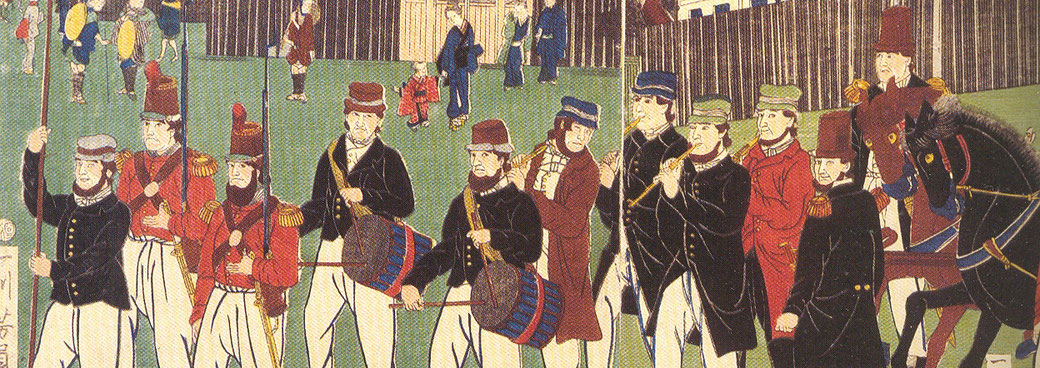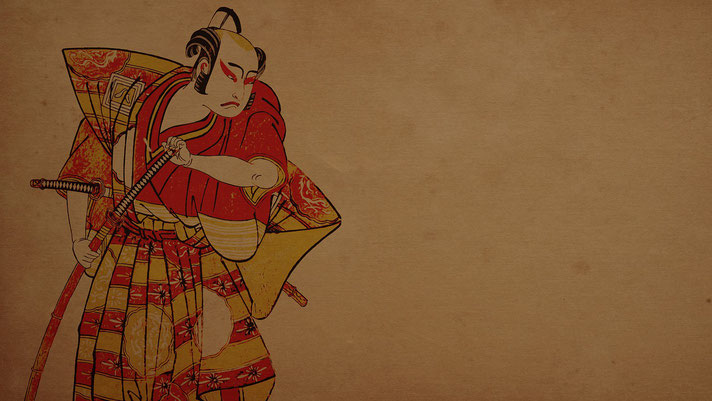Commodore Perry and the end of Japan's isolation

The arrival of Commodore Perry and his Black Ships from the United States in 1853 was a major disruption to Japan.
This event signaled the decline of the Tokugawa shogunate, which had governed Japan for more than two and a half centuries.
The shogunate ended in 1868 after forces loyal to the emperor overcame the shogunate's forces and reinstated the emperor's authority.
The fall of the shogunate and the rise of the Meiji era were influenced by both domestic and international pressures, ushering in a period of modernisation and Westernisation in Japan.
Why Japan had shut itself off from the world
In the 19th century, Japan was a secluded nation, and the Tokugawa shogunate, also known as the bakufu or 'tent government', endeavored to maintain this isolation by limiting trade with foreign countries.
The Tokugawa bakufu was established in 1603 and was a feudal military dictatorship led by the Tokugawa clan until 1868.
It was founded when Tokugawa Ieyasu defeated the Toyotomi clan in the Battle of Sekigahara in 1600 and became the ruler of Japan.
The Tokugawa shogunate instituted the policy of sakoku, meaning 'closed country', which was a period of isolation from the rest of the world.
The sakoku policy isolated Japan for more than 200 years.
The arrival of the Americans
The arrival of Commodore Perry and his Black Ships at Edo Bay (Tokyo) in 1853, known as the Perry Expedition, forced Japan to open its ports to trade with the West.
Perry had a fleet of four ships and was sent by the United States in order to get Japan to sign a treaty that would allow the US access to Japanese ports.
The bakufu initially responded with reluctance, employing delaying tactics. However, representatives from the shogunate ultimately convened with Commodore Perry to receive the letter sent by the President Millard Fillmore of the United States.
The letter did not contain a treaty but proposed that “the United States and Japan should live in friendship” and suggested the emperor “change the ancient laws to allow a free trade between the two countries".
Simply put, it was a request for diplomatic and trade relations between America and Japan.
Perry informed the representatives that he would come back the next year to obtain Japan's response.
The Treaty of Kanagawa
However, Perry did not wait a full year to return. He came back on February 13, 1854, which was only about seven months later with an even larger fleet of seven ships.
Regardless, the bakufu was still resistant to US dominance in Japan, recognizing the potential threat posed by a foreign 'barbarian' nation.
Emperor Kōmei (1831-1867) allowed the bakufu to sign a treaty that would allow the United States limited access to two ports in Japan: those at Shimoda and Hakodate.
It was the first time in over 200 years that Japan allowed foreign vessels to enter its harbors for trade and resupply.
The Treaty of Kanagawa was officially signed on 31 March 1854, and is now considered to be the beginning of Japan's opening to the world.
Specifically, the treaty permitted the United States to set up a consulate in Japan at Shimoda. It also stipulated that US citizens, including those shipwrecked, would have the freedom to reside at the ports without any restrictions or confinement.
In the years following the Treaty of Kanagawa, Japan signed a series of unequal treaties known as the Ansei Treaties with other Western powers, including Great Britain, France, the Netherlands, and Russia.
Harris Treaty
An additional treaty was signed on 29 July 1858, which gave the US access to more ports and greater opportunities for trade between the two countries.
Officially called the Treaty of Amity and Commerce, it is commonly referred to as the Harris Treaty, named after Townsend Harris, the first United States Consul to Japan.
This treaty also established extraterritoriality rights for foreigners in Japan, which meant that foreigners were not subject to Japanese law and could only be tried by their own country's laws.
It also granted US nationals residing in the Japanese treaty ports the freedom to practice their Christian faith.
Adopting western ideas
The bakufu acknowledged the inevitability of foreign influence in Japan and opted to try to understand Western technology and ideas.
It started to dispatch students, referred to as rangaku scholars, to pursue studies in the Netherlands and other European nations.
These scholars played a pivotal role in the introduction of Western technology and knowledge into Japan.
Japan encountered new forms of government, technology, and education, and quickly recognized the advantages of integrating these elements into its society.
The bakufu, recognizing the need for defense against potential foreign attacks, also opted to import Western weaponry.
Nevertheless, the Western influence in Japan was not universally welcomed and resulted in civil unrest and conflict.
This period of time from 1853 to 1868 is called the bakumatsu, which means 'end of bakufu'.
The Boshin War and the end of bakufu
The bakumatsu period was a time of profound change and transition as Japan faced growing pressures from foreign powers, exposure to Western ideas and technology, and internal conflicts and tensions.
During this time, the ruling Tokugawa shogunate faced challenges from various factions within Japanese society, including imperial loyalists, reformists, and those who saw the shogunate as a hindrance to Japan’s modernisation and national unity.
Many samurai, particularly those from the southern domains, were unhappy with the bakufu's decision to open up Japan to foreigners.
They felt that it was a betrayal of the country, and it had led to significant economic disruptions which had not been addressed.
The samurai made the decision to overthrow the bakufu which resulted in the outbreak of the Boshin War in 1868.
The Boshin War was led by those samurai from Chōshū and Satsuma, which were two of the most powerful domains in Japan.
The initial conflict began in Kyoto and other parts of mainland Japan. While the shogunate forces initially held their ground, the turning point came at the Battle of Toba–Fushimi in January 1868, where forces loyal to the emperor decisively defeated the shogunate’s troops.
Then, the final stand by the shogunate forces took place at the Battle of Hakodate in 1869.
Here, the bakufu was ultimately defeated and the emperor was finally restored to power.
As a result, the Tokugawa shogunate was abolished and replaced by a new government, which was later called the Meiji Restoration.
Why did the shogunate fall?
The collapse of the Tokugawa shogunate resulted from a mix of internal and external pressures.
On the home front, increasing dissatisfaction with the shogunate's corruption and ineffectiveness spurred calls for political and social reforms.
Internationally, Japan was facing increasing pressure from foreign powers, in particular from the West, which sought greater access to Japan's economy and resources.
This, along with the shogunate's military weakness and financial instability, contributed to the decline of the shogunate.
The arrival of American Commodore Perry in 1853 was a wake-up call, demonstrating the shogunate's inability to defend Japan against foreign threats and highlighting the need for modernisation.
The fall of the shogunate paved the way for the Meiji era which lasted from 1868-1912.
During this time Japan underwent a period of rapid modernisation and Westernisation.
The Meiji era is known for its significant political, economic, and social reforms, including the abolition of the samurai class in the 1870s with the Haitorei Edict, the establishment of a constitutional monarchy, and the introduction of Western-style institutions and technologies.

What do you need help with?
Download ready-to-use digital learning resources
Copyright © History Skills 2014-2025.
Contact via email
With the exception of links to external sites, some historical sources and extracts from specific publications, all content on this website is copyrighted by History Skills. This content may not be copied, republished or redistributed without written permission from the website creator. Please use the Contact page to obtain relevant permission.





